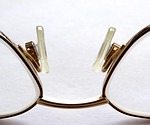
Some doctors will add "DS" for "diopters sphere" and others will leave it blank. This doctor chose to write "SPH," to confirm the right eye is being prescribed only spherical power. No cylinder power or axis, which means no astigmatism is present. 2.00 D sphere for the correction of nearsightedness. In the right eye (OD), the eye doctor prescribed: Still confused? Let's look at an example prescription chart: When prism diopters are indicated in decimal form, typically only one digit appears after the period (e.g., 0.5). They are in decimal form and generally are written in quarter-diopter (0.25 D) increments.Īxis values are whole numbers from 1 to 180 and signify only a meridional location, not a power. Sphere power, cylinder power and add power always appear in diopters. When present, the amount of prism is indicated in either metric or fractional English units (0.5 or ½, for example), and the direction of the prism is indicated by noting the relative position of its "base" (thickest edge).įour abbreviations are used for prism direction: BU = base up BD = base down BI = base in (toward the wearer's nose) BO = base out (toward the wearer's ear). Only a small percentage of eyeglass prescriptions include a prism measurement. This is the amount of prismatic power, measured in prism diopters ("p.d." or a triangle when written freehand), prescribed to compensate for eye alignment problems. Generally, it will range from +0.75 to +3.00 D and will be the same power for both eyes.
DEFINE SPECTACLE PLUS
The number appearing in this section of the prescription is always a "plus" power, even when you don’t see a plus sign. “Add” is the added magnifying power applied to the bottom part of multifocal lenses to correct presbyopia - the natural farsightedness that happens with age. The axis is the lens meridian that is 90 degrees away from the meridian that contains the cylinder power for astigmatism correction. The number 180 corresponds to the horizontal meridian of the eye.

The number 90 corresponds to the vertical meridian of the eye.

The axis is defined with a number from 1 to 180. If an eyeglass prescription includes cylinder power, it also needs to include an axis value, which follows the cylinder power. AxisĪxis describes the lens meridian that contains no cylinder power to correct astigmatism. The 90-degree meridian is the vertical meridian of the eye, and the 180-degree meridian is the horizontal meridian. Meridians of the eye are determined by superimposing a protractor scale on the eye's front surface. The term "cylinder" means that this lens power added to correct astigmatism is not spherical, but instead is shaped so one meridian has no added curvature, and the meridian perpendicular to this "no added power" meridian contains the maximum power and lens curvature to correct astigmatism. If nothing appears in this column, you either don’t have astigmatism, or your degree of astigmatism is so small that it doesn’t need to be corrected. The number in the cylinder column may have a minus sign (for correction of nearsighted astigmatism) or a plus sign (for farsighted astigmatism).

It always follows the sphere power on an eyeglass prescription.

Cylinder (CYL)Ĭylinder indicates the amount of lens power needed for astigmatism. The term "sphere" means that the correction for nearsightedness or farsightedness is "spherical," or equal in all meridians of the eye. If the number under this heading has a plus sign (+), you are farsighted. If the number under this heading comes with a minus sign (–), you are nearsighted. Sphere indicates the amount of lens power prescribed to correct nearsightedness or farsightedness. If you're trying to order new glasses online and struggling to translate your prescription correctly, ask your eye doctor or optician to help. Reading your eyeglass prescription can feel like reading a foreign language written in math! Trouble translating your glasses prescription?


 0 kommentar(er)
0 kommentar(er)
